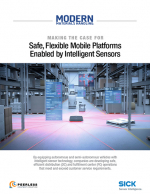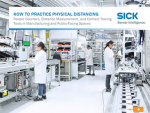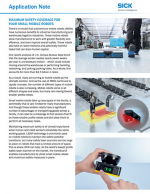Risk Reduction Measures in the Updated ANSI B11.19 Standard
The latest revision of ANSI B11.19 had a distinctive aim to become a counterpart to ANSI B11.0. Utilizing ANSI B11.0, readers can justify selection of risk reduction measures according to the risk assessment process.
Part 2 of 6 in a series addressing the new edition (2019) of ANSI B11.19
As mentioned in the previous SICK white paper Reducing Risk on Industrial Machinery: An Introduction to the Updated ANSI B11.19 Standard, the newest edition of ANSI B11.19 includes a number of risk reduction measures not addressed in previous editions.
Furthermore, the new standard has reorganized the concepts of risk reduction into a systematic structure following the hierarchy of controls, also known as the three-step method.
This white paper is aimed to briefly introduce the new topics presented in ANSI B11.19. A thorough understanding of the technical requirements can only be achieved by acquiring and reviewing the standard in its entirety.
Step 1: Inherently Safe by Design
Risk reduction measures which are inherently safe by design, are defined by ANSI B11 as “a design measure that reduces risk, which is not susceptible to a malfunction that will increase the risk of harm.” Both ANSI B11.0 and ANSI B11.19 discuss these measures in detail in the new editions.
Of particular interest, it is important to clarify a misnomer that has existed in industry for some time. ISO 12100 refers to Step 1 as “inherently safe design measures,” and defines it as a “protective measure which either eliminates hazards or reduces the risks associated with hazards by changing the design or operating characteristics of the machine without the use of guards or protective devices.”
The ISO definition, in use since at least 2003, is not aligned with the technology of today. As written, any measure that is not a guard or device (e.g., interlock, light curtain, etc.) and built into the equipment qualifies as “inherently safe design.” The confusion this has introduced is an assumption that anything integrated into a machine is, therefore, “inherently safe.“
However, another definition important to consider in light of this discussion is that of a safety function, described as a “function of a machine whose failure can result in an immediate increase of the risk(s).”
It is widely accepted that safety functions are implemented by Step 2 of the hierarchy of controls. With equipment such as power and force limited (PFL) robots, commonly referred to as ‘collaborative robots,’ the power and force limiting feature used to reduce risk is indeed inherently built into the equipment.
However, almost all PFL robots on the market today utilize monitoring of speed and/or force to implement the limiting features. This monitoring function is indeed susceptible to failures, in which case risk will immediately increase. It is imperative to consider the measure itself and how it functions, rather than simply considering if it is built into the equipment by the designer.
What’s Related




Favorites





